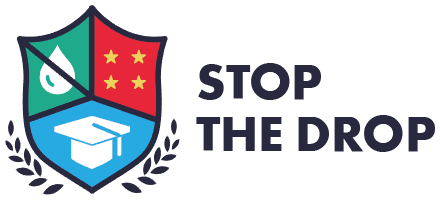

1. The data gathering step | 2. The process of problem solving... | 3. Building and testing the Portfolio | 4. The portfolio
In order to conceive the present Portfolio, we have opted for a three-step methodology consisting of the following:
A « toolbox » has also been created to provide practical advice, as a guideline aimed at implementing preventive actions against dropout in the field of adult learning.
Each step results from our transnational meetings or videoconferences (during the covid-19 lockdown) between the partners.
At the 1st transnational meeting organised in Belgium in 2018, the partners began by laying out the whole context in which their respective target groups were dropping out, on the basis of data and numbers they had been collecting until then. And thanks to the practical experience and suggestions of our Hungarian partners, we have decided to build up conversation teams made of, more or less, 20 learners and teaching-staff members or administrative staff members in the framework of three World Café sessions [1], where everyone has been enabled to debate and share knowledge on different aspects – the individual one, the institutional one and the educational aspect about the drop-out issue and its related obstacles and solutions throughout the school curriculum.
A detailed and analysed layout of each case has led to a briefing note for each partner and has been shared on Google Drive.
The 2nd transnational meeting in Hungary in May 2019 made possible to share and confront our respective experience and organise the issues we have in common by a series of different approaches allocated to each partner:
Each partner organised a feedback session over the layouts highlighted by the respective partners, so as to keep our students and staff informed about the progress of our researching and to include them in the process of problem solving.
The second phase of the project is focussed on the elaboration of each approach by using the tool of tree mapping in order to:
Once the causes of dropout had been identified – be these specific to each partner state or commonly shared –, each partner focussed on problem solving and elaborating tools during a 3rd meeting organised in Aruba in January 2020.
As these tools and solutions are meant to be implemented in each school, the problem of applying them has emerged, and finding a solution for each and every specific issue appeared to be impossible. So we have decided to select the problems that were recurrent for each partner: 5 votes have been given to each approach and 3 to 4 tools/solutions that won the majority of votes have been selected and validated to be tested. During our 2nd meeting, this has led us to elaborate a testing schedule and build up a portfolio that would follow the 4 approaches identified in view to apply them.
This third, and long-running, step is about building, discussing and eventually validating the tools commonly generated, in the shape of a toolbox.
The transnational meetings occurred by distance through digital means because of the coronavirus crisis. We first defined a table of contents based on the 4 main approaches we have been working on. Due to the current crisis, we decided to add a chapter related to the covid-19 circumstances: indeed, we have been facing a situation where it is of utmost importance for our teaching staff to avoid dropping-out among our students in a fast and effective way. To this end, our partners laid out the current circumstances, defined the theoretical framework, issued recommendations and discussed about potential obstacles, by picturing practical examples, for each approach. They also informed about practical links to specific works or Internet websites.
Then, the partners drew « Summary Sheets » and we compiled them in a « toolbox », with all the different solutions related to each approach our partners were in charge to address. This toolbox is aimed at providing advice for implementing practical solutions to avoid dropout among adult learners.
At last, apart from the special measures put in place to disseminate the Portfolio in these unusual circumstances, Belgium has suggested to its partners to draw up and issue a common survey for teachers to collect opinions about distance learning/teaching and their solutions (new tools, new teaching methods) so not to lose students as much as possible.
The testing phase initially scheduled for October 2020 has unfortunately been cancelled because of the covid-19 crisis. It was meant to identify and evaluate the advantages and disadvantages of the solutions and tools implemented in each school institution and for the related target groups.
We are pleased to share with you our portfolio, the result of a three year project as part of the Erasmus+ project "Developing the motivation of adults at risk of drop-out".
1 According to Marco Paoli’s definition , consulted on February 9th, 2021), a World Café is a methodological tool that provides a frame for meetings in an interactive and collaborative way by stimulating debate for practical solutions to a certain issue. It has become tradition in participative methods. The aim of it is to create a working atmosphere of confidence in order for the participants to share and brainstorm ideas collectively in an informal way by simulating a chat at a café. The room is then organised in different tables where the participants are invited to talk, debate and suggest ideas and solutions. Several sessions are organised with the following dynamic: being able to move from table to table frequently, and in doing so, exchange ideas between groups and make them feed each other ("pollination" method for a collective insight).
[translation based on the original document and https://www.erasmuspluscourses.com/blog/category/academics/2, consulted on February 12th, 2021]
January
2021
October
2020
June
2020
May
2020
January
2020
May
2019
February
2019
December
2018
December
2018
November
2018